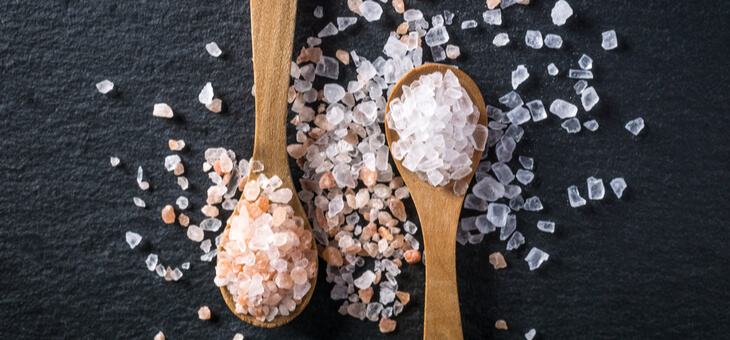It’s touted as being better for you than ordinary table salt, but how does the pink-hued Himalayan rock salt actually measure up?
Many of us couldn’t imagine sitting down to a meal without shaking some salt over it first. However, most of us also know that too much salt can lead to hypertension, stroke and heart disease.
Himalayan salt has emerged as a ‘healthier’ alternative to table salt, or sodium chloride, in recent years purportedly because it is less stressful for the body to consume.
Read: Discover healthier alternatives to salt
You’ve probably noticed the pink salt next to the regular white table salt at the supermarket. You’ve also probably noticed that it’s about 10 times the price.
Himalayan salt has become increasingly popular in recent years, and many have claimed it has numerous health benefits over regular salt. But how true are these claims and is it worth the exorbitant price tag?
The answer, to both questions, is no.
Himalayan salt is sourced from near the Himalaya mountains in the Punjab region of Pakistan. The pink colour of the salt is due to the presence of trace amounts of calcium, zinc, iron, chromium, magnesium and sulphate.
Read: Do you crave salt? This might be why
Many of these nutrients are beneficial to the body, but they are present in such small amounts that it makes little difference.
It’s true that Himalayan salt does contain slightly less sodium than regular table salt, but most Himalayan salts are between 96 and 99 per cent sodium chloride, so the reduction is minimal.
“Pink salt’s reputation for being ‘healthier’ has now been debunked, with the nutrient level too low and variable for it to be a consistent source of nutrients,” says Dr Flavia Fayet-Moore, CEO of Nutrition Research Australia.
Read: Have a morning thalassa: How calm, salt therapy can help you
“While pink salt may look prettier … there are many healthy ways to enhance flavour and add colour to your meal, such as using herbs and spices like paprika, turmeric, cinnamon, saffron and even pink peppercorns.”
According to the National Health and Medical Research Council (NHMRC), adults should aim to consume no more one teaspoon (five grams) of salt per day, but that the average Australian was consuming almost double that amount.
And whether it’s pink Himalayan salt or good old-fashioned white table salt doesn’t make much difference.
If you enjoy our content, don’t keep it to yourself. Share our free eNews with your friends and encourage them to sign up.

